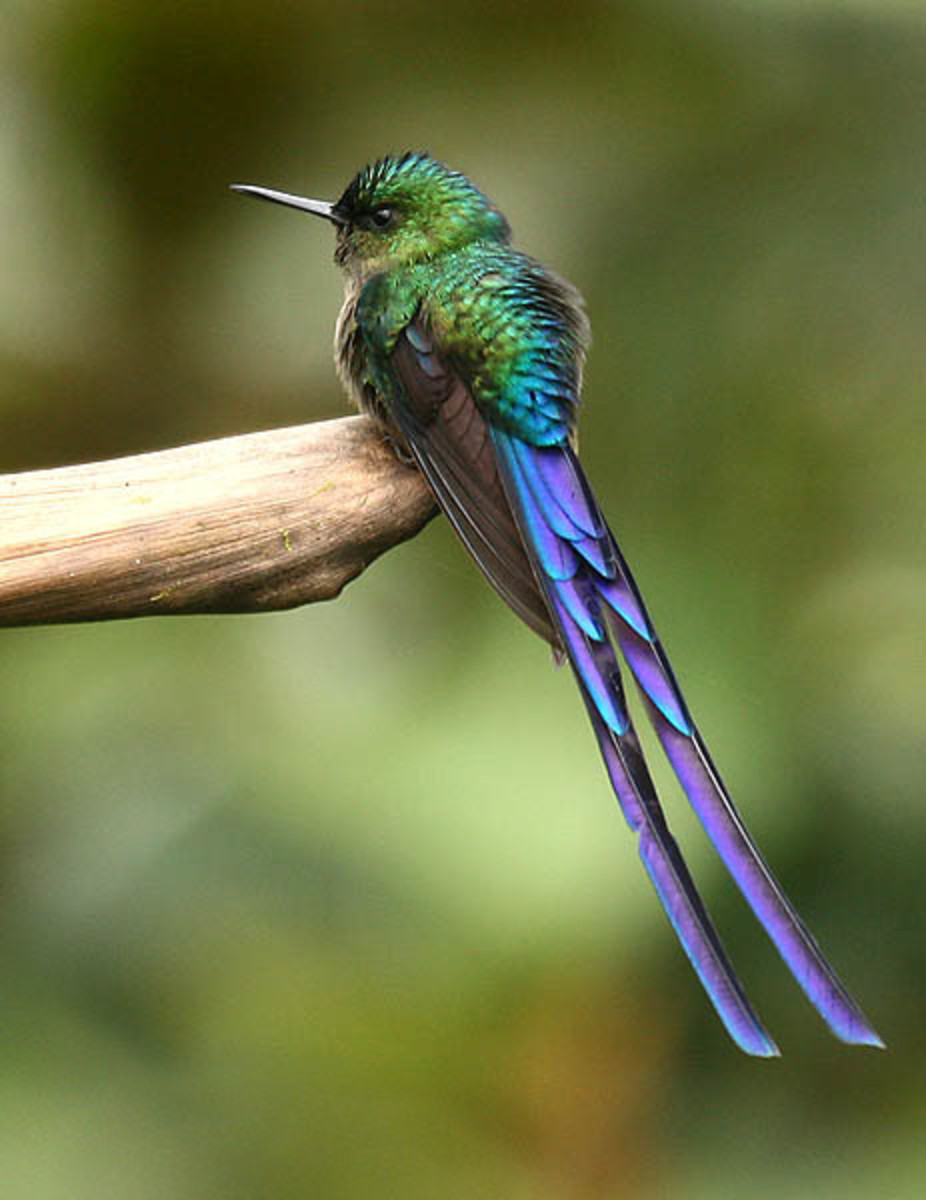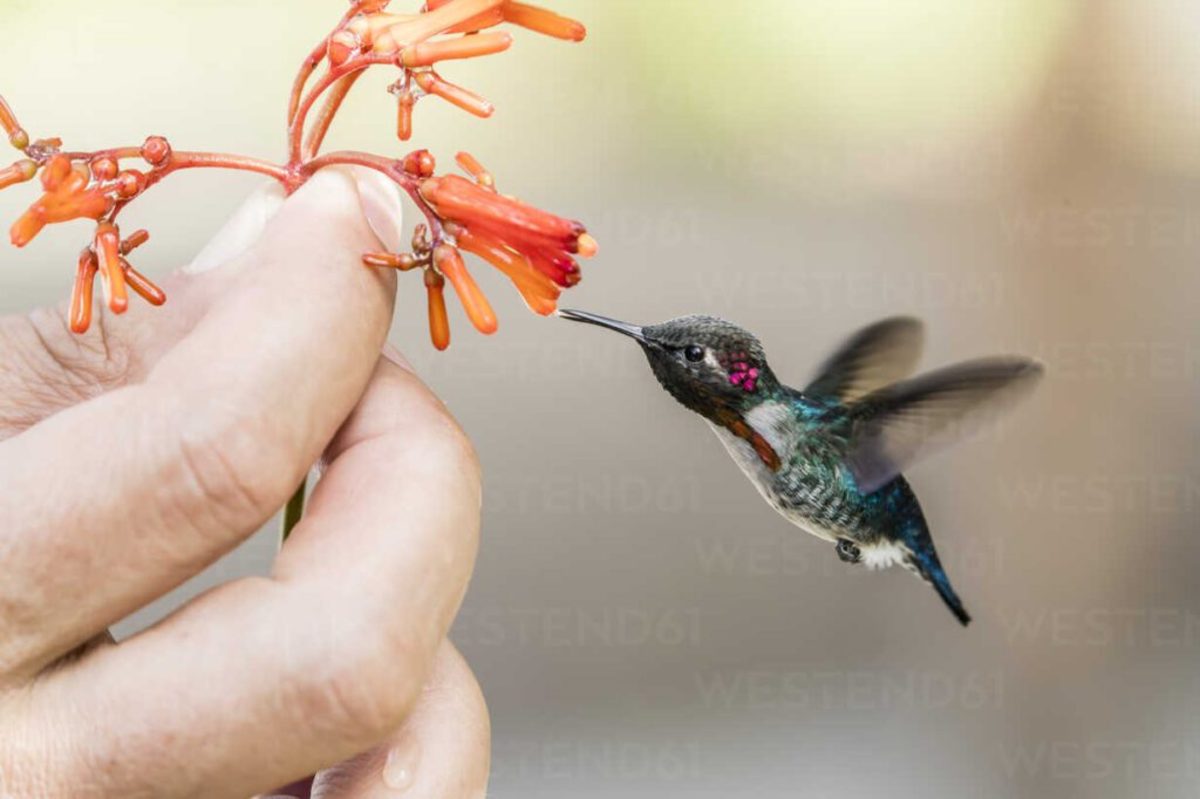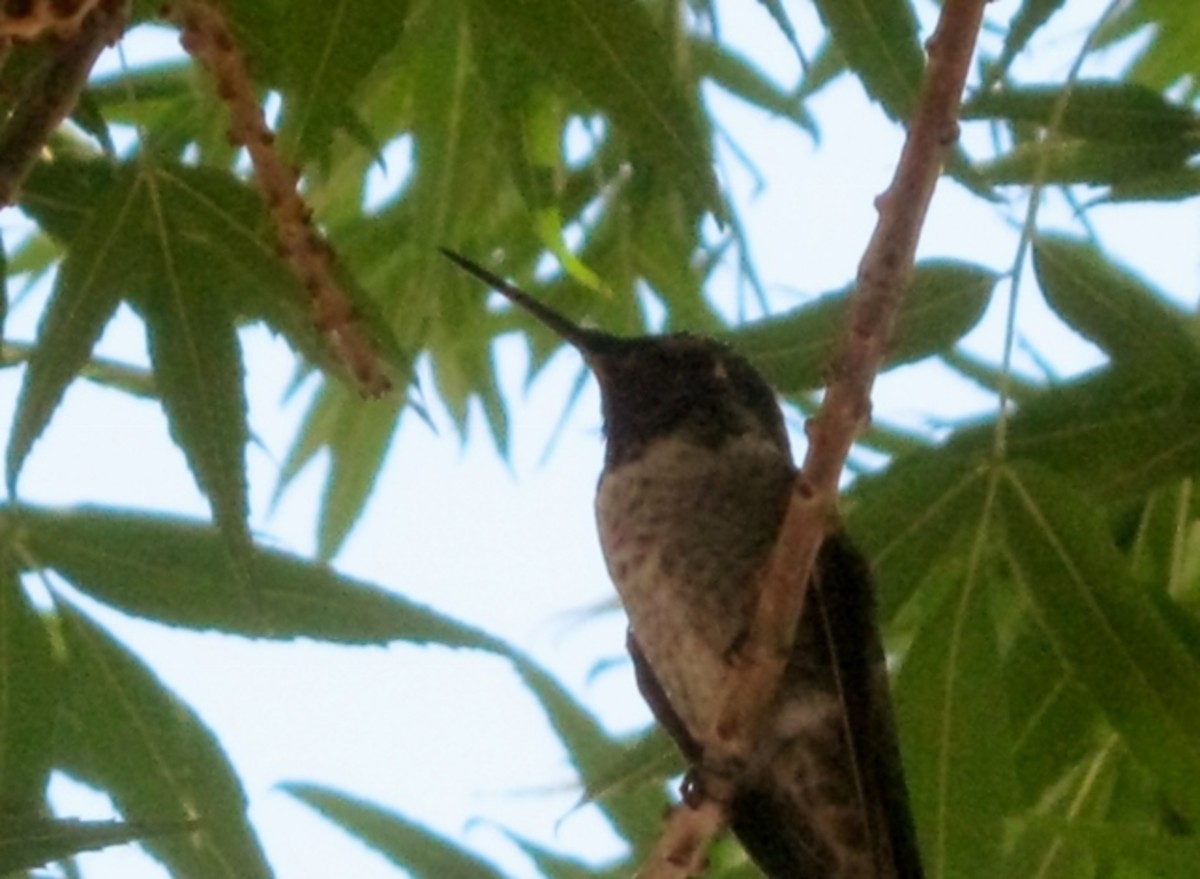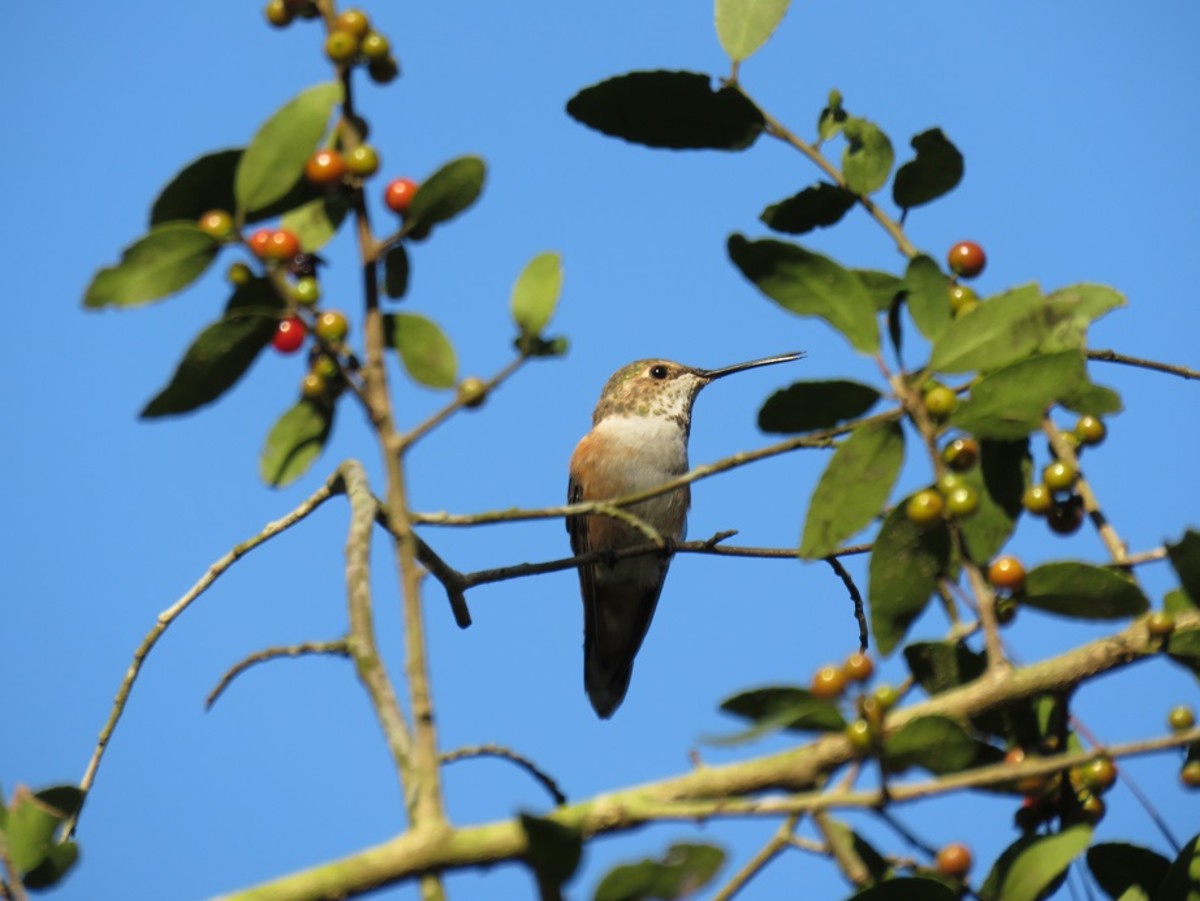Tips for Attracting, Feeding and Photographing Hummingbirds
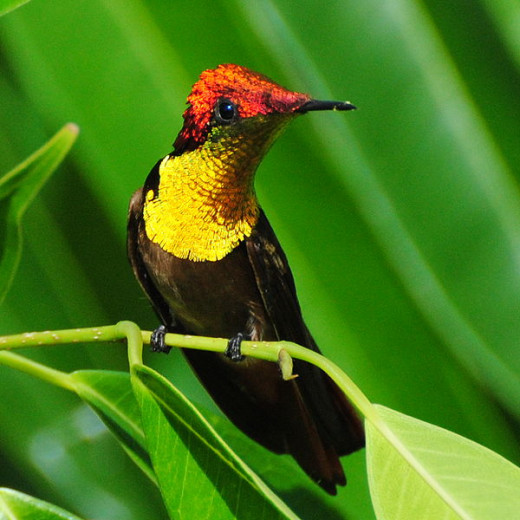
Hummingbirds are New World birds that constitute the family Trochilidae. They are among the smallest of birds, most species measuring in the 7.5–13 cm (3–5 in) range. Indeed, the smallest extant bird species is a hummingbird, the 5-cm bee hummingbird, weighing less than a U.S. penny.
They are known as hummingbirds because of the humming sound created by their beating wings which flap at high frequencies audible to humans. They hover in mid-air at rapid wing-flapping rates, typically around 50 times per second,[1]but possibly as high as 200 times per second, allowing them also to fly at speeds exceeding 15 m/s (54 km/h; 34 mph),[2]backwards or upside down.[3][4]
Hummingbirds have the highest metabolism of any homeothermic animal.[5] To conserve energy when food is scarce, they have the ability to go into a hibernation-like state (torpor) where their metabolic rate is slowed to 1/15th of its normal rate.[6] Wikipedia
Photographing birds is easily accomplished with a zoom or telephoto lens in the range of at least 300mm.
They will mostly settle when eating and when perched and if you study their habits you are better prepared to take good photographs.
But there are some feathered little creatures who seem to be functioning at 200%, never stopping to feed and smaller than your closed fist.
To photograph these little critters you will not only need a zoom or telephoto lens, but a flash unit as well, and quick reflexes.
Off course as the tittle tells you, I am referring to hummingbirds. For one thing they are mostly migratory birds, who move from climate zone to climate zone as per the seasons. Although several species stay within their territory year round.They are also prolific feeders, needing to feed on nectar constantly.
This is due to their high metabolic rate. You can almost predict their visits, since they routinely visit the same location several times during the day and are extremely territorial.
They consume about half of their body weight per day, usually feeding every 6 to 10 minutes, with a heart rate of about 1260 beats per minute and the need for a high caloric intake.
Hummingbirds are native to South America, but over the years now occupy most of the Western Hemisphere with about 16 species calling the United States home.
Attracting them to your home can be accomplished with a few well placed feeders or and abundance of nectar producing flowers. Fire bush, columbines, bee balm and honeysuckle are some of their favorites nectar plants.
They also consume insects, so other insect attracting plants are good to have. Water attracts them too as does good perching and nesting sites.
If making your own feeder a simple design is to use a disposable water bottle, put a cork on the opening, drill a hole thorough the cork, insert a bent piece of copper tubing (small diameter), wrap a red ribbon around the bottle, invert the bottle and suspend it from a branch with string or wire.
The mixture should be about three parts water with one part sugar; do not use syrup, honey, food coloring or sweeteners as these can kill the hummingbird. Change the mixture every three days, two if it's hot outside.
You also need to be aware that hummingbirds may tend to abandon a feeder which they find to be dirty, empty or in which the sugar/water mixture has become cloudy so your feeders need to be maintained regularly.
To photograph them takes some patience, and quick reflexes as well as a little research into their habits and locations.
You need to be in place in the area where they are expected about 30 minutes before. Set your camera on a tripod if using long heavy lenses, but hand holding is better, at least in this case since using a tripod might restrict your movements.
Position yourself in a comfortable location, preferably sitting and just wait. If the spot is one of their feeding stops, they will be back.
A telephoto or zoom lens will allow you to get in close to photograph the details from a distance, a fast shutter speed is needed (over 1000) if you want to freeze the movements of their wings which are about 10 to 80 beats per second depending on the species.
A flash is almost always required, the flash burst will help freeze the movement and highlight their brightly colored plumage and aid in the elimination of unwanted shadows and dark spots.
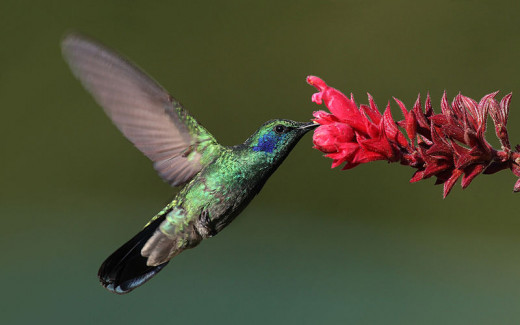
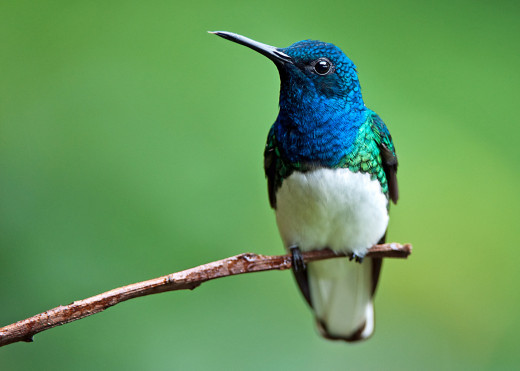
When photographing hummingbirds, your main focus of attention has to be on its eyes.
Even if other parts of the birds are not in clear focus or some blur is captured in the image, if the eyes are not clear, the only use for that photo is to remind you to be ready next time.
Hummingbirds will hover just in front of the flower on which they will feed for several seconds, with only their rapidly beating wings not clearly visible. Aim, focus and shoot when you first see them and as they feed.
They will usually ignore you until they have had their fill. Wear non distinctive neutral colored clothing and keep deodorant and colognes to neutral.
Strong body odors and chemical fragrances can sometimes dissuade them from approaching the food sources, as so does too much movement in the vicinity.
Disturbing the area as little as possible and being in position ahead of time does help, their incessant need to feed will make them come to their feeding stations time after time, but if there are other feeding, less disturbed sites nearby, then they may end up abandoning your spot.
Note: if you find a hummingbird nest, or any other nest for that matter, that has eggs avoid touching the eggs.
Your body odor will permeate the eggs and can cause the parents to abandon the nest site and the eggs, and worst, if the eggs have hatched, they can also abandon the hatchlings.
Many more nature and photography articles with tips, techniques and project ideas!
Do hummingbirds visit where you live?
- Attracting Hummingbirds
The Web's premier place to learn about hummingbirds.One good way to enjoy the company of hummingbirds is planting a hummingbird garden. In addition to providing them a natural diet, a hummer garden is an excellent way to attract birds to your nearby
© 2011 Luis E Gonzalez



